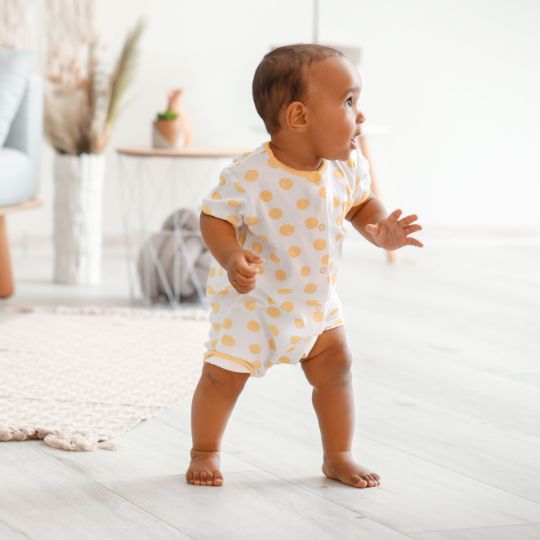I often discuss milestone acquisition during treatment of infants and young toddlers. I like to educate their caregivers about what’s happening, what my expectations for gross motor movements are, when further support or a referral is needed, etc.
The Center for Disease Control (CDC) has a large document file that shows parents exactly what their benchmarks are, broken down by age. You can find the checklist here. Fun fact, they also have an app that you can download to help track your child(ren) if that would be helpful for you. Having too much information at your fingertips can cause anxiety for some parents and you know yourself best so if this is not a good tool for you, please just keep reading instead!
This has been a large topic of conversation in the office in my personal life recently because there were a lot of small things happening that told me progress was happening but Tori was not walking until recently. And for me, I truly am comfortable being totally honest about her development and what things she is up to but for many parents, questions can often lead them to feel like they aren’t doing enough or their child is failing.
Children typically walk between 12-15 months. Some children do this much earlier or much later and the vast majority of the time, any of these options are usually just fine. Children develop on their own timeline, not the way a textbook tells us it should happen.
I usually give a child about 2 months additional time after we expect a milestone acquisition before we talk about a referral to get another set of eyes and another opinion about the child’s development. In that time, I am hoping there are some smaller milestones happening that lead to the bigger one.
In Tori’s case, she was already pulling herself up on furniture and walking aka “cruising” along the furniture. About 4 weeks before she was walking as her primary source of movement, she was beginning to stand in the middle of the room without using anything to pull herself up and reaching out for a hand or something to push to help her move. She would take about 4 steps and then drop to her hands and knees to crawl. For her, and for many children this is because they know they are much faster and need instant gratification.
I quickly realized that when this was happening she was great with her left leg but was VERY hesitant to move her right leg. This could have been due to tightness, weakness or possibly a combination of both. In adults, we often say tight muscles need to be strengthened and I take the same approach with children.
I began to work on the tightness in her right hip and made it a point while I was home with her to help get that leg a bit stronger. She was very interested in crawling up the stairs at that point so I made her use her left leg to go up onto the higher step and push off the lower one with her right leg. After a few days of this, she was no longer hesitant to use her right leg to step.
She realized if she held a toy in each hand, her balance was better and she was able to take a few more steps. This confidence continued to grow and grow until one day she didn’t want to crawl anymore, she was walking most of the time. She was just a few days shy of 14 months old, so well within the normal milestone acquisition range.
To me, this was different for most patients because they are used to hearing all the stories of people around them that have early walkers and were concerned about Tori, but I hope that by sharing this, others who have been asked a lot of questions feel better about their child’s development. If you have any questions, please reach out to me or schedule an appointment to be seen in the office, here!





